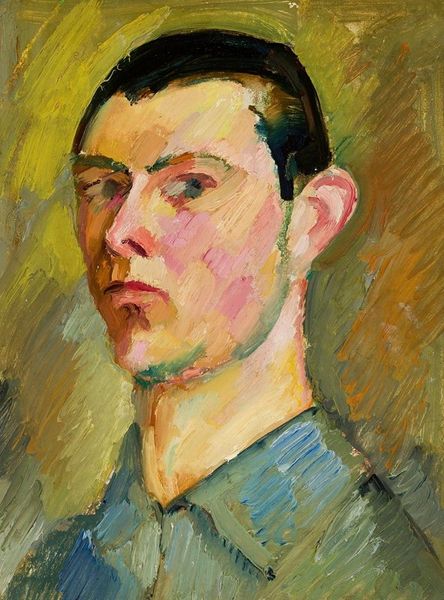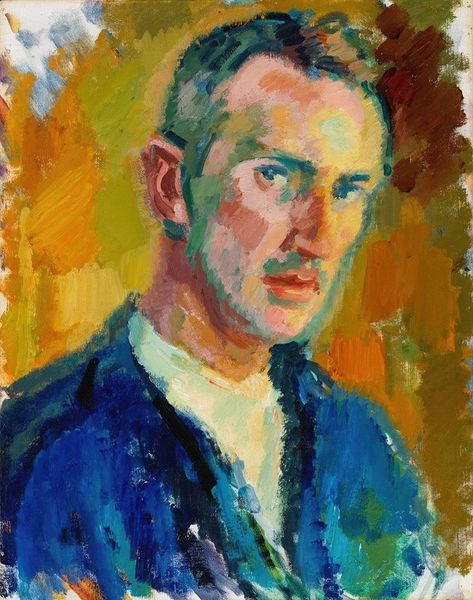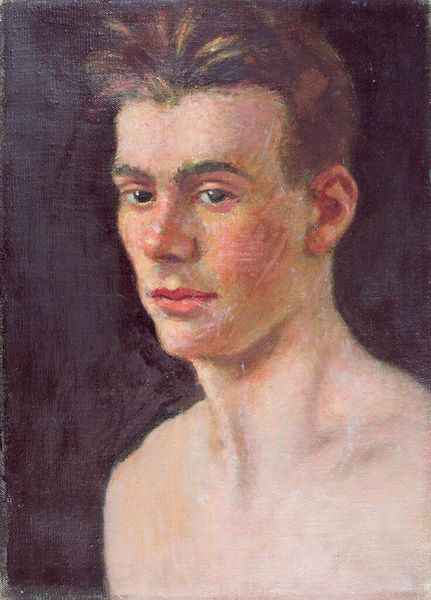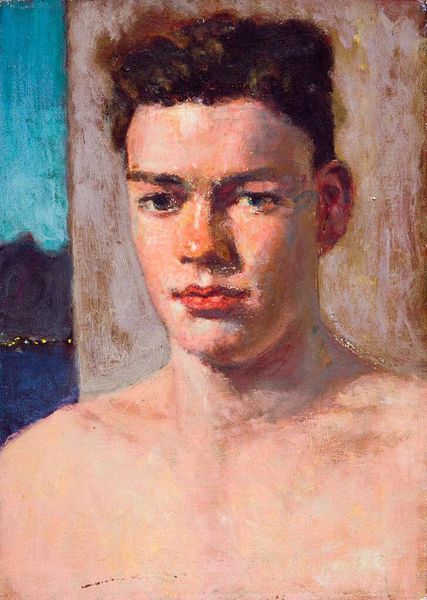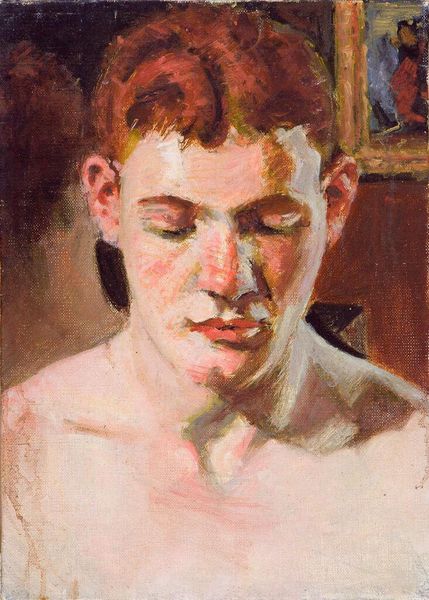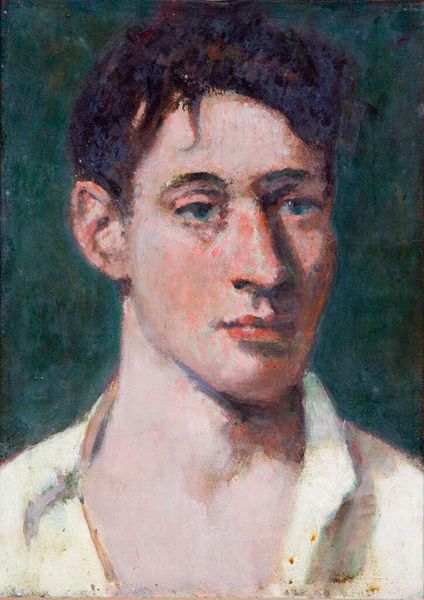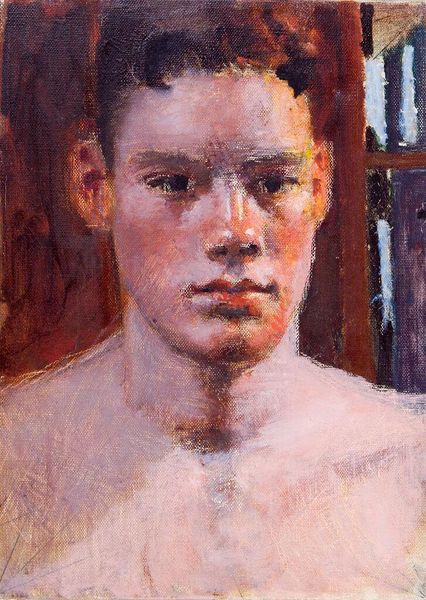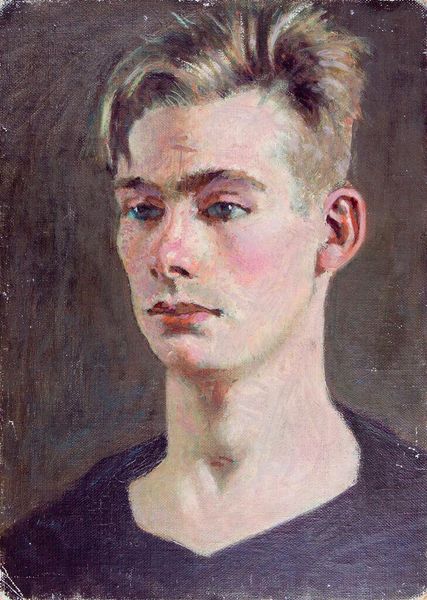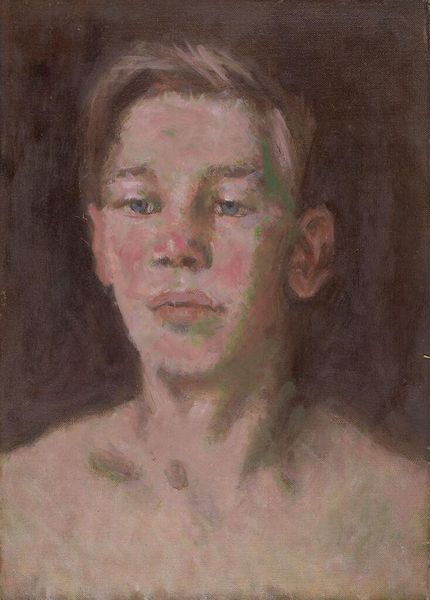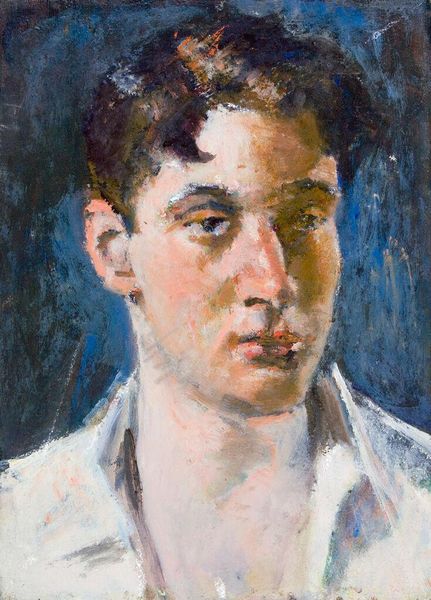
painting, oil-paint
#
portrait
#
cubism
#
figurative
#
self-portrait
#
painting
#
oil-paint
#
oil painting
#
expressionism
#
modernism
Copyright: Public Domain: Artvee
Curator: We’re now looking at a self-portrait by Zygmunt Waliszewski, made sometime between 1914 and 1918. He worked primarily with oil paints during his career. Editor: The first thing that strikes me is how intense the subject's gaze is. The colors, especially the yellows and greens in the background, create an unsettling feeling that contrasts sharply with the cold blues and fleshy tones used in rendering the figure. Curator: Absolutely. Considering the historical context—WWI raging during those years—we can explore how the painting echoes the societal anxieties around identity and selfhood during that era. Cubism, adopted here by Waliszewski, shatters the singular viewpoint, reflecting the fragmented nature of experience. Editor: It is a compelling use of Cubism! Notice how his features aren't conventionally aligned, almost as if the artist is presenting multiple facets of himself simultaneously. The visible brushstrokes also add a layer of raw honesty. Was this meant to subvert traditional portraiture in any way? Curator: Definitely. Within the context of early 20th-century art institutions, adopting cubism was a statement in itself. Waliszewski positioned himself as part of the avant-garde challenging the established academic art world. By deconstructing the self through geometric forms and bold colors, Waliszewski seems to push the viewer to confront not just what they see, but *how* they see. Editor: I'm also intrigued by his presentation. The hints of the red garment beneath the partially opened sailor’s style top suggest a hidden aspect of his character—a rebellious spirit? The red interrupts the visual flow of blue, white and flesh tones to create a jarring disharmony and attract immediate attention to itself. Curator: Precisely! Those are elements one can easily interpret within the framework of personal and cultural politics. Self-representation is never neutral, and in Waliszewski's time, artists consciously negotiated their identities and their roles within a transforming Europe. Editor: I keep returning to the eyes...they feel as if they're staring straight through you, unflinching and maybe even a bit challenging. Curator: Well, this brief observation only scratches the surface, inviting all of us to further interrogate the narratives embedded in works like these, using them as mirrors to understand the past and better inform the present. Editor: Agreed, it reminds us that art is more than just aesthetic appeal; it’s an invitation to deconstruct norms, challenge expectations, and foster a more critically engaged viewership.
Comments
No comments
Be the first to comment and join the conversation on the ultimate creative platform.
